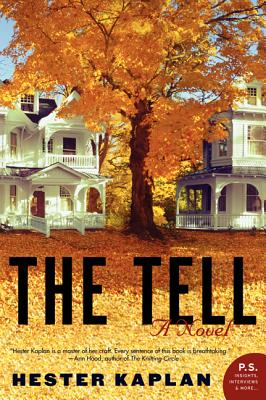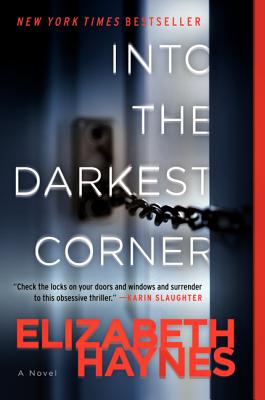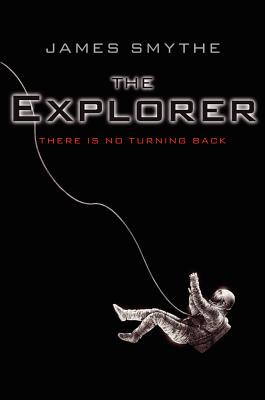"this is my book and i am writing it by my own hand."
Mary and her three sisters rise every day to backbreaking farmwork that threatens to suppress their own awakening desires, whether it's Violet's pull toward womanhood or Beatrice's affinity for the Scriptures. But it's their father, whose anger is unleashed at the slightest provocation, who stands to deliver the most harm. Only Mary, fierce of tongue and a spitfire since birth, dares to stand up to him. When he sends her to work for the local vicar and his invalid wife in their house on the hill, he deals her the only blow she may not survive.
Within walking distance of her family farm, the vicarage is a world away–a curious, unsettling place unlike any she has ever known. Teeming with the sexuality of the vicar's young son and the manipulations of another servant, it is also a place of books and learning–a source of endless joy. Yet as young Mary soon discovers, such precious knowledge comes at a devastating price, as is gradually made clear once she begins the task of telling her own story.
Reminiscent of Alias Grace in the exploration of the power dynamics between servants and those they serve and of Celie's struggles in The Color Purple, this quietly devastating tour de force reminds us that knowledge can destroy even as it empowers.
Mary and her three sisters rise every day to backbreaking farmwork that threatens to suppress their own awakening desires, whether it's Violet's pull toward womanhood or Beatrice's affinity for the Scriptures. But it's their father, whose anger is unleashed at the slightest provocation, who stands to deliver the most harm. Only Mary, fierce of tongue and a spitfire since birth, dares to stand up to him. When he sends her to work for the local vicar and his invalid wife in their house on the hill, he deals her the only blow she may not survive.
Within walking distance of her family farm, the vicarage is a world away–a curious, unsettling place unlike any she has ever known. Teeming with the sexuality of the vicar's young son and the manipulations of another servant, it is also a place of books and learning–a source of endless joy. Yet as young Mary soon discovers, such precious knowledge comes at a devastating price, as is gradually made clear once she begins the task of telling her own story.
Reminiscent of Alias Grace in the exploration of the power dynamics between servants and those they serve and of Celie's struggles in The Color Purple, this quietly devastating tour de force reminds us that knowledge can destroy even as it empowers.
An elegant and haunting novel of love and family, The Tell demands that we reconsider our notions of marriage—duty, compromise,
betrayal, and the choice to stand by or leave the ones we love.
Mira and Owen's marriage is less stable than they know when Wilton Deere, an aging, no longer famous TV star moves in to the grand house next door. With plenty of money and plenty of time to kill, Wilton is charming but ruthless as he inserts himself into the couple's life in a quest for distraction, friendship—and most urgently—a connection with Anya, the daughter he abandoned years earlier. Facing stresses at home and work, Mira begins to accompany Wilton to a casino and is drawn to the slot machines. Escapism soon turns to full-on addiction and a growing tangle of lies and shame that threatens her fraying marriage and home. Betrayed and confused, Owen turns to the mysterious Anya, who is testing her own ability to trust her father after many years apart.
The Tell is a finely-wrought novel about risk: of dependence, of responsibility, of addiction, of trust, of violence. Told with equal parts suspense, sympathy, and psychological complexity, it shows us the intimate and shifting ways in which we reveal ourselves before we act, and what we assume but don’t know about those closest to us.
Catherine Bailey has been enjoying the single life long enough to know a catch when she sees one. Gorgeous, charismatic and spontaneous, Lee seems almost too perfect to be true. And her friends clearly agree, as each in turn falls under his spell.
But what begins as flattering attentiveness and passionate sex turns into raging jealousy, and Catherine soon learns there is a darker side to Lee. His increasingly erratic, controlling behaviour becomes frightening, but no one believes her when she shares her fears. Increasingly isolated and driven into the darkest corner of her world, a desperate Catherine plans a meticulous escape.
Four years later, Lee is behind bars and Catherine—now Cathy—compulsively checks the locks and doors in her apartment, trusting no one. But when an attractive upstairs neighbour, Stuart, comes into her life, Cathy dares to hope that happiness and love may still be possible . . . until she receives a phone call informing her of Lee’s impending release. Soon after, Cathy thinks she catches a glimpse of the former best friend who testified against her in the trial; she begins to return home to find objects subtly rearranged in her apartment, one of Lee’s old tricks. Convinced she is back in her former lover’s sights, Cathy prepares to wrestle with the demons of her past for the last time.
Mira and Owen's marriage is less stable than they know when Wilton Deere, an aging, no longer famous TV star moves in to the grand house next door. With plenty of money and plenty of time to kill, Wilton is charming but ruthless as he inserts himself into the couple's life in a quest for distraction, friendship—and most urgently—a connection with Anya, the daughter he abandoned years earlier. Facing stresses at home and work, Mira begins to accompany Wilton to a casino and is drawn to the slot machines. Escapism soon turns to full-on addiction and a growing tangle of lies and shame that threatens her fraying marriage and home. Betrayed and confused, Owen turns to the mysterious Anya, who is testing her own ability to trust her father after many years apart.
The Tell is a finely-wrought novel about risk: of dependence, of responsibility, of addiction, of trust, of violence. Told with equal parts suspense, sympathy, and psychological complexity, it shows us the intimate and shifting ways in which we reveal ourselves before we act, and what we assume but don’t know about those closest to us.
Catherine Bailey has been enjoying the single life long enough to know a catch when she sees one. Gorgeous, charismatic and spontaneous, Lee seems almost too perfect to be true. And her friends clearly agree, as each in turn falls under his spell.
But what begins as flattering attentiveness and passionate sex turns into raging jealousy, and Catherine soon learns there is a darker side to Lee. His increasingly erratic, controlling behaviour becomes frightening, but no one believes her when she shares her fears. Increasingly isolated and driven into the darkest corner of her world, a desperate Catherine plans a meticulous escape.
Four years later, Lee is behind bars and Catherine—now Cathy—compulsively checks the locks and doors in her apartment, trusting no one. But when an attractive upstairs neighbour, Stuart, comes into her life, Cathy dares to hope that happiness and love may still be possible . . . until she receives a phone call informing her of Lee’s impending release. Soon after, Cathy thinks she catches a glimpse of the former best friend who testified against her in the trial; she begins to return home to find objects subtly rearranged in her apartment, one of Lee’s old tricks. Convinced she is back in her former lover’s sights, Cathy prepares to wrestle with the demons of her past for the last time.
When journalist Cormac Easton is selected
to document the first manned mission into deep space, he dreams of
securing his place in history as one of humanity's great explorers.
But in space, nothing goes according to plan.
T
he crew wake from hypersleep to discover their captain dead in his allegedly fail-proof safety pod. They mourn, and Cormac sends a beautifully written eulogy back to Earth. The word from ground control is unequivocal: no matter what happens, the mission must continue.
But as the body count begins to rise, Cormac finds himself alone and spiraling toward his own inevitable death . . . unless he can do something to stop it.
In his first-ever collaboration, New York Times bestselling author James Rollins combines his skill for cutting-edge science and historical mystery with award-winning novelist Rebecca Cantrell's talent for haunting suspense and sensual atmosphere in a gothic tale about an ancient order and the hunt for a miraculous book known only as . . . The Blood Gospel
An earthquake in Masada, Israel, kills hundreds and reveals a tomb buried in the heart of the mountain. A trio of investigators—Sergeant Jordan Stone, a military forensic expert; Father Rhun Korza, a Vatican priest; and Dr. Erin Granger, a brilliant but disillusioned archaeologist—are sent to explore the macabre discovery, a subterranean temple holding the crucified body of a mummified girl.
But a brutal attack at the site sets the three on the run, thrusting them into a race to recover what was once preserved in the tomb's sarcophagus: a book rumored to have been written by Christ's own hand, a tome that is said to hold the secrets to His divinity. The enemy who hounds them is like no other, a force of ancient evil directed by a leader of impossible ambitions and incalculable cunning.
From crumbling tombs to splendorous churches, Erin and her two companions must confront a past that traces back thousands of years, to a time when ungodly beasts hunted the dark spaces of the world, to a moment in history when Christ made a miraculous offer, a pact of salvation for those who were damned for eternity.
Here is a novel that is explosive in its revelation of a secret history. Why do Catholic priests wear pectoral crosses? Why are they sworn to celibacy? Why do the monks hide their countenances under hoods? And why does Catholicism insist that the consecration of wine during Mass results in its transformation to Christ's own blood? The answers to all go back to a secret sect within the Vatican, one whispered as rumor but whose very existence was painted for all to see by Rembrandt himself, a shadowy order known simply as the Sanguines.
In the end, be warned: some books should never be found, never opened—until now.

A decorated detective inspector is murdered on the tranquil grounds of the St. Peter's Police Treatment Centre, shot through the heart with a crossbow arrow, and compromising photographs are discovered in his room. Detective Chief Inspector Alan Banks is well aware that he must handle the highly sensitive—and dangerously explosive—investigation with the utmost discretion.
Because the case may involve police corruption, an officer from Professional Standards, Inspector Joanna Passero, has arrived to work with Banks and his team. Though he tries to keep an open mind and offer his full cooperation, the dedicated Banks and his practical investigative style clash with Passero's cool demeanor and by-the- book professionalism. All too soon, the seasoned detective finds himself under uncomfortable scrutiny, his methods second-guessed.
As Banks digs deeper into the life and career of the victim, a decorated cop and recent widower named Bill Quinn, he comes to believe that Quinn's murder may be linked to an unsolved missing persons case. Six years earlier, a pretty nineteen-year-old English girl named Rachel Hewitt made national headlines when she disappeared without a trace in Tallinn, Estonia. Convinced that finding the truth about Rachel will lead to Quinn's killer, Banks follows a twisting trail of clues that lead from England to the dark, cobbled alleys of Tallinn's Old Town. But the closer he seems to solving the complicated cold case, the more it becomes clear that someone doesn't want the past stirred up.
While Banks prowls the streets of Tallinn, DI Annie Cabbot, recovered from her near-fatal shooting and back at the station in Eastvale, is investigating a migrant labor scam involving corrupt bureaucrats and a loan shark who feeds on the poor. As evidence in each investigation mounts, Banks realizes the two are linked—and that solving them may put even more lives, including his own, in jeopardy.
But in space, nothing goes according to plan.
T
he crew wake from hypersleep to discover their captain dead in his allegedly fail-proof safety pod. They mourn, and Cormac sends a beautifully written eulogy back to Earth. The word from ground control is unequivocal: no matter what happens, the mission must continue.
But as the body count begins to rise, Cormac finds himself alone and spiraling toward his own inevitable death . . . unless he can do something to stop it.
In his first-ever collaboration, New York Times bestselling author James Rollins combines his skill for cutting-edge science and historical mystery with award-winning novelist Rebecca Cantrell's talent for haunting suspense and sensual atmosphere in a gothic tale about an ancient order and the hunt for a miraculous book known only as . . . The Blood Gospel
An earthquake in Masada, Israel, kills hundreds and reveals a tomb buried in the heart of the mountain. A trio of investigators—Sergeant Jordan Stone, a military forensic expert; Father Rhun Korza, a Vatican priest; and Dr. Erin Granger, a brilliant but disillusioned archaeologist—are sent to explore the macabre discovery, a subterranean temple holding the crucified body of a mummified girl.
But a brutal attack at the site sets the three on the run, thrusting them into a race to recover what was once preserved in the tomb's sarcophagus: a book rumored to have been written by Christ's own hand, a tome that is said to hold the secrets to His divinity. The enemy who hounds them is like no other, a force of ancient evil directed by a leader of impossible ambitions and incalculable cunning.
From crumbling tombs to splendorous churches, Erin and her two companions must confront a past that traces back thousands of years, to a time when ungodly beasts hunted the dark spaces of the world, to a moment in history when Christ made a miraculous offer, a pact of salvation for those who were damned for eternity.
Here is a novel that is explosive in its revelation of a secret history. Why do Catholic priests wear pectoral crosses? Why are they sworn to celibacy? Why do the monks hide their countenances under hoods? And why does Catholicism insist that the consecration of wine during Mass results in its transformation to Christ's own blood? The answers to all go back to a secret sect within the Vatican, one whispered as rumor but whose very existence was painted for all to see by Rembrandt himself, a shadowy order known simply as the Sanguines.
In the end, be warned: some books should never be found, never opened—until now.

A decorated detective inspector is murdered on the tranquil grounds of the St. Peter's Police Treatment Centre, shot through the heart with a crossbow arrow, and compromising photographs are discovered in his room. Detective Chief Inspector Alan Banks is well aware that he must handle the highly sensitive—and dangerously explosive—investigation with the utmost discretion.
Because the case may involve police corruption, an officer from Professional Standards, Inspector Joanna Passero, has arrived to work with Banks and his team. Though he tries to keep an open mind and offer his full cooperation, the dedicated Banks and his practical investigative style clash with Passero's cool demeanor and by-the- book professionalism. All too soon, the seasoned detective finds himself under uncomfortable scrutiny, his methods second-guessed.
As Banks digs deeper into the life and career of the victim, a decorated cop and recent widower named Bill Quinn, he comes to believe that Quinn's murder may be linked to an unsolved missing persons case. Six years earlier, a pretty nineteen-year-old English girl named Rachel Hewitt made national headlines when she disappeared without a trace in Tallinn, Estonia. Convinced that finding the truth about Rachel will lead to Quinn's killer, Banks follows a twisting trail of clues that lead from England to the dark, cobbled alleys of Tallinn's Old Town. But the closer he seems to solving the complicated cold case, the more it becomes clear that someone doesn't want the past stirred up.
While Banks prowls the streets of Tallinn, DI Annie Cabbot, recovered from her near-fatal shooting and back at the station in Eastvale, is investigating a migrant labor scam involving corrupt bureaucrats and a loan shark who feeds on the poor. As evidence in each investigation mounts, Banks realizes the two are linked—and that solving them may put even more lives, including his own, in jeopardy.





No comments:
Post a Comment